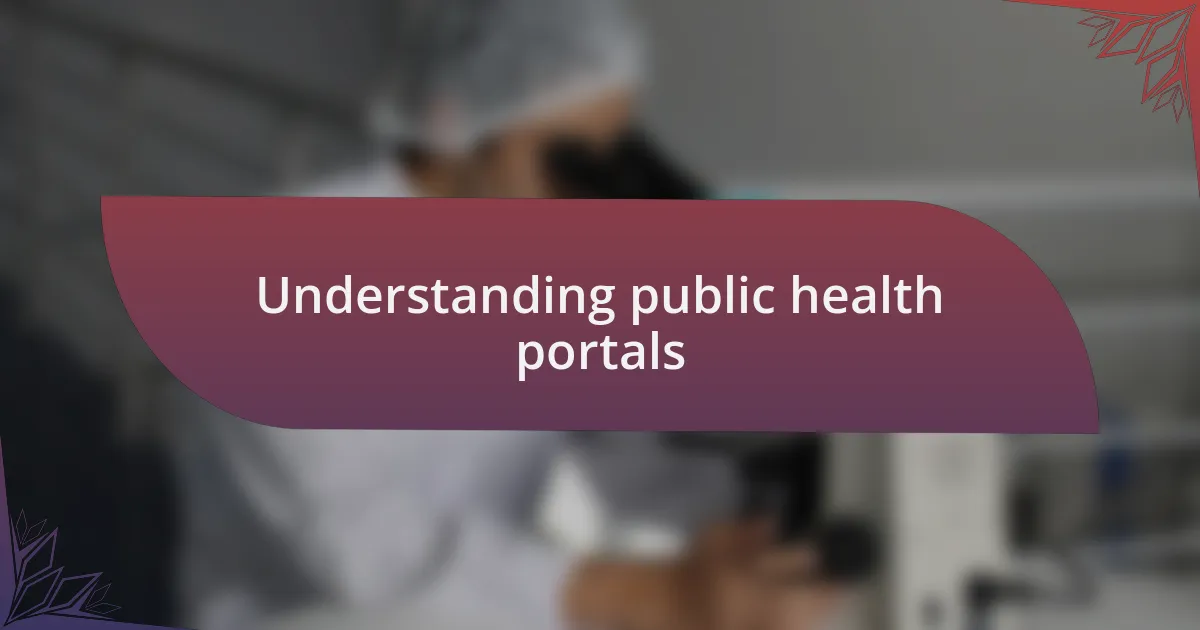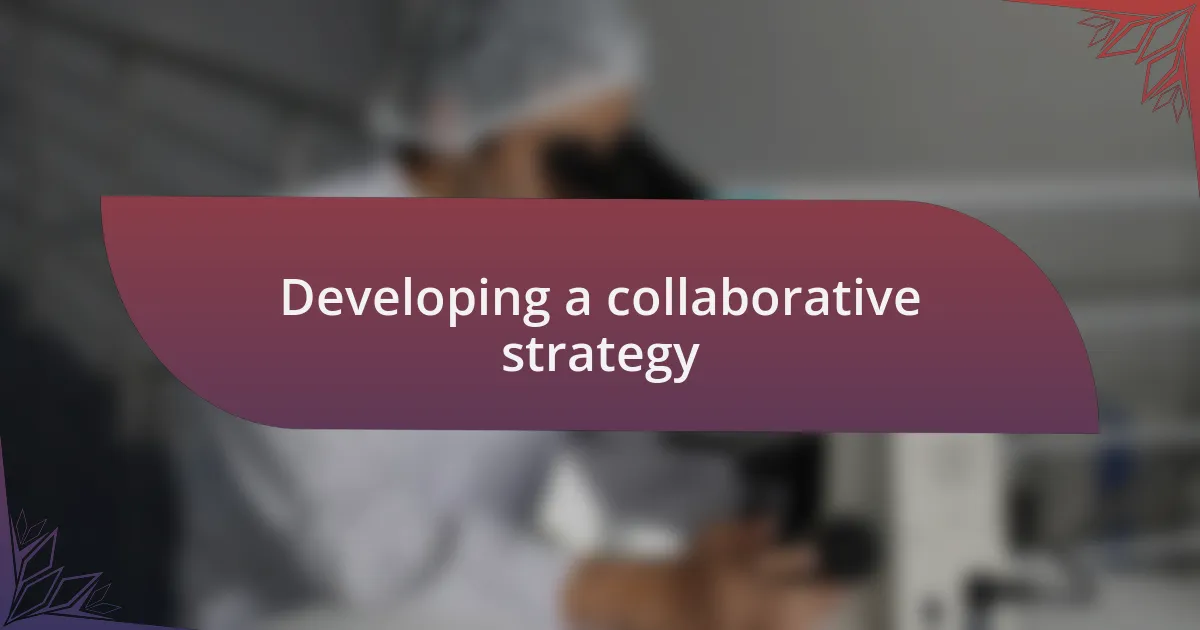Key takeaways:
- Public health portals enhance access to healthcare information, fostering collaboration and informed decision-making in communities.
- Identifying potential non-profit partners involves aligning mission, evaluating community reputation, and establishing clear communication from the start.
- Developing a collaborative strategy requires flexibility, clear roles, and a shared vision to drive innovation and trust among partners.
- Effective communication techniques, such as active listening and storytelling, strengthen partnerships and enhance team cohesion towards common goals.

Understanding public health portals
Public health portals serve as vital hubs for information, connecting communities with essential healthcare resources and data. I remember the first time I navigated one; it felt like unlocking a treasure chest of information that could empower individuals to take charge of their health. Don’t you find it fascinating how technology can bridge gaps in public health?
One of the most compelling aspects of these portals is their ability to foster collaboration among different sectors. When I worked with a local non-profit to develop educational resources, we realized how an integrated approach helped us reach a wider audience. Have you ever considered how different organizations can come together to amplify their impact through a single platform?
Moreover, these portals aren’t just about raw data; they provide context that makes the information meaningful. I once delved into epidemiological trends through a public health portal and felt a deep sense of responsibility as I grasped the real-life implications of those statistics. It’s amazing to think about how understanding such data can lead to informed decisions that ultimately improve community health.

Identifying potential non-profit partners
Identifying potential non-profit partners begins with aligning mission and vision. When I first began this process, I spent hours researching organizations whose goals closely matched my own values in public health. It’s truly eye-opening to see how a shared mission can enhance collaborative efforts. Have you ever thought about the power of working with others who share your passion?
Next, I found it crucial to evaluate a non-profit’s track record and community reputation. I remember attending a community event hosted by a potential partner; the genuine engagement from attendees told me everything about their impact. This experience reinforced my belief that visible, positive community involvement is an essential indicator of a strong ally in public health initiatives.
Lastly, I recommend establishing open lines of communication early on. Early in my collaboration journey, I reached out to potential partners with transparency about my goals and expectations. This approach allowed for vibrant discussions, which not only clarified our intentions but also sparked innovative ideas for joint efforts. Isn’t it inspiring how conversations can lead to new possibilities and strengthen partnerships?

Developing a collaborative strategy
Developing a collaborative strategy is akin to crafting a mutual roadmap. I recall sitting with a potential partner, mapping out our shared goals on a whiteboard, and it struck me how aligning our objectives created a vibrant energy. Have you ever felt that spark when two visions begin to converge? It’s powerful and can lead to innovative solutions in public health.
As I navigated this process, I learned the importance of flexibility within the strategy. During one discussion, we uncovered an unexpected opportunity to integrate our initiatives, which required us to pivot our original plan slightly. It was a reminder that sometimes the best collaborations arise when we remain open to new ideas and paths. Isn’t it fascinating how adaptability can lead to unexpected benefits?
I’ve also found that establishing clear roles and responsibilities is vital for effective collaboration. In another partnership, we assigned specific tasks based on our strengths—my analytical skills against their community outreach expertise. This division not only empowered each team member but also fostered a sense of ownership over our collaborative efforts. Reflecting on these experiences, I believe clarity is key to fostering trust and accountability in any partnership.

Implementing effective communication techniques
Effective communication is the backbone of any collaboration, especially when working with non-profits. I remember a meeting where we had to convey our vision amidst the chaos of differing opinions. By actively listening and encouraging open dialogue, we unraveled the misunderstandings, allowing everyone’s voice to be heard. It was a powerful moment; have you ever witnessed how clarity can transform a chaotic conversation into a productive brainstorming session?
In my experience, utilizing various communication channels significantly enhances collaboration. During a particular project, we established weekly check-in calls and created a shared online platform for updates and documents. This multi-faceted approach not only kept everyone informed but also fostered an environment of inclusivity. It made me realize that when partners feel regularly connected, the sense of teamwork flourishes—that feeling of everyone pulling together toward a common goal is invaluable.
Moreover, using storytelling as a communication technique has been surprisingly effective. I once shared personal anecdotes reflecting on the impact our initiatives had on the community. Seeing the passion in my partners’ eyes reminded me of how powerful narratives can ignite motivation and commitment. It begs the question: isn’t it fascinating how a simple story can turn abstract ideas into relatable and motivating action?

Measuring impact of collaboration
Measuring the impact of collaboration often feels like deciphering a complex puzzle. In one project I was involved with, we set specific, measurable goals before diving in, like increasing community engagement by 30%. When the results came in, I was exhilarated to see we exceeded that target, proving that defining clear objectives really makes a difference. Have you ever noticed how setting goals can shift focus and energize a team?
Data collection is another crucial element in assessing the success of partnerships. During an initiative focused on health education, we conducted pre- and post-surveys to gauge changes in knowledge among participants. The transformation was tangible; I remember seeing the look of realization on attendees’ faces as they connected the dots. It was a vivid reminder that sometimes, numbers tell a story richer than words alone.
Qualitative feedback also plays a vital role in evaluating impact. After one impactful workshop, I gathered testimonials from participants about their experiences. Their heartfelt reflections not only highlighted the effectiveness of our collaboration but also deepened our understanding of community needs. Isn’t it empowering to realize that the voices of those we serve can guide us in our future endeavors?